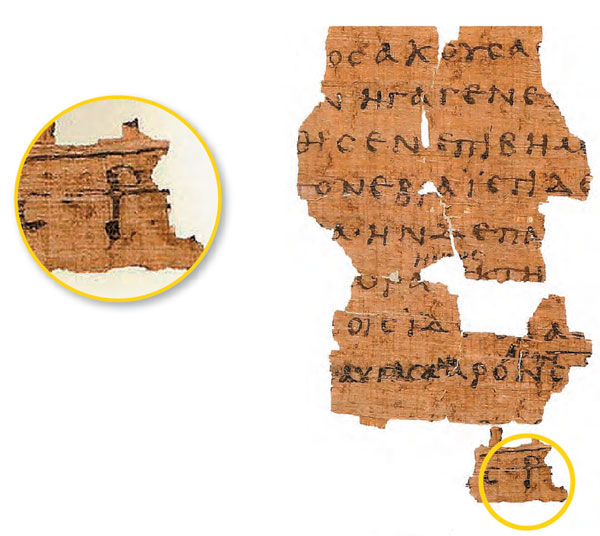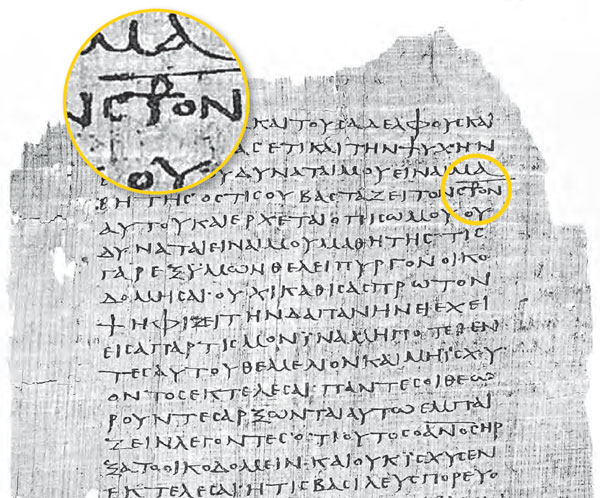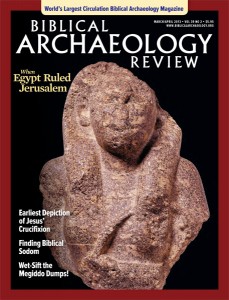The Staurogram
Earliest Depiction of Jesus’ Crucifixion
In Greek, the language of the early church, the capital tau, or T, looks pretty much like our T. The capital rho, or R, however, is written like our P.
If you superimpose the two letters, it looks something like this:  . The earliest Christian uses of this tau-rho combination make it what is called a staurogram. In Greek the verb to “crucify” is stauroō; a “cross” is a stauros. In scholarly terms a combination of letters like this is called a compendium, a monogram-like device, in this case (in the earliest Christian uses) producing a pictographic representation of a crucified figure hanging on a cross—used in the Greek words for “crucify” and “cross.”
. The earliest Christian uses of this tau-rho combination make it what is called a staurogram. In Greek the verb to “crucify” is stauroō; a “cross” is a stauros. In scholarly terms a combination of letters like this is called a compendium, a monogram-like device, in this case (in the earliest Christian uses) producing a pictographic representation of a crucified figure hanging on a cross—used in the Greek words for “crucify” and “cross.”


It is a commonplace belief among historians of the early church that early Christianity did not emphasize Jesus’ crucifixion and that this did not change until the late fourth or fifth century. Crucifixion was shameful, and so (so the theory goes) Christians would have been hesitant to draw attention to the crucified Jesus. Indeed, some scholars have inferred from this the notion that pre-Constantinian Christianity avoided depictions of Jesus’ crucifixion.
Already a library member? Log in here.
Institution user? Log in with your IP address.

